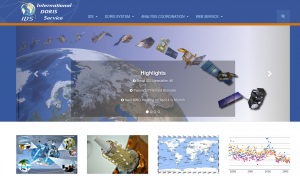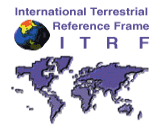CNES/CLS Analysis Center for IGS

Website: https://igsac-cnes.cls.fr/
Summary: Since 2007, CNES/GS and CLS teams have been processing regularly GPS and GNSS data from a worldwide network of IGS permanent stations.
This teams compute precise GNSS orbits together with Earth rotation parameters and stations coordinates at the sub centimetre level.
International DORIS Service

L’IDS is a spatial geodesy service of IAG (International Association of Geodesy) which works closely with the IERS (International Earth Reference frames Service)
IDS purpose is to support research activities in geodesy and geophysics through the data and products from DORIS System (Doppler Orbitography and Radio-positioning Integrated by Satellite) created in 1982 by CNES, GRGS and IGN for accurate orbitography of altimetry satellites.
IERS-EOP
Web site : IERS-EOP
Missions of the EOP Product Centre of the International Earth Rotation and Reference Systems Service (IERS):
- Collect through the world the time series of the Earth Orientation Parameters (EOP):
- pole coordinates (x,y)
- universal time (UT1-UTC, UT1-TAI) or length-of-day offset LOD
- Celestial pole offsets (Dpsi, Deps)
These time series are derived from the various astro-geodetic techniques (LLR, SLR, GPS, VLBI and DORIS).
- Archive EOP and make them avaible through FTP/WEB
- Analyse EOP and in particular monitor their consistencies with respect to the international terrestrial and celestial referene frames.
- Compute combined standard solution for EOP: Bulletin B or IERS C04 solution (daily since 1962), and IERS C01 solution (0.05 year sampling since 1846)
- Compute and make available DUT1 (Bulletin D) and leap second announcements (Bulletin C).
International Terrestrial Reference Frame

L’ITRS International Terrestrial Reference System is the reference system recommanded by IERS.
RENAG (RESIF)
REseau NAtional GNSS permanent
Management committee: Commission des Services Nationaux d’Observations (CSNO)
Web site: renag.resif.fr
Summary:
The RENAG goals are to install and maintain over the long term a network of permanent GPS stations for scientific applications. RENAG acquires, stores, validates, distributes and analyzes data from about 75 university stations. 18 French research teams are actively involved in the establishment of observing systems, data acquisition, in their scientific exploitation and dissemination, and their sustainability (BD RENAG).
The network’s objectives are to:
- quantify the slow tectonic deformation of France, to establish the link with the moderate seismicity and to constrain models of the current deformation,
thus contributing to the assessment of seismic hazard on the national territory. - constrain sea level variations, by separating vertical land motion from climatic contributions in tide gauge records thanks to co-located GPS stations.
- fill a persistent observational gap of tropospheric water vapor in meteorology for the analysis of heavy rain events, for assimilation of GPS data in
operational forecast models and to provide stable measurements over long periods for climatology. - characterize the transient deformations induced by loads (atmospheric, oceanic, hydrological).
RGP (IGN)
Réseau GNSS Permanent
Web site : http://rgp.ign.fr/
The RGP is originally a network of permanent GPS stations recording at least the code and phase data from all satellites in visibility. Today, more and more stations of the network are bi-constellations (GPS + GLONASS) pending the coming arrival of Galileo.
The data from all stations is repatriated to two data centers. After a relatively brief quality check (matching the name of the file and the contents, checking the header information, the number of recorded data), the data is made available to the public via an FTP server.
The IGN plays a unifying role in the framework of the RGP. It installs its own GPS stations but also signs agreements with all interested partners to integrate the RGP. Its data center manages the repatriation of data and ensures the backup and archiving. In the RGP specifications, the hourly data is online for ten days and saved for an additional month. The daily data are archived for a period of three years. In fact, all the daily data recorded since the creation of the RGP, as well as the hourly data are available online.



